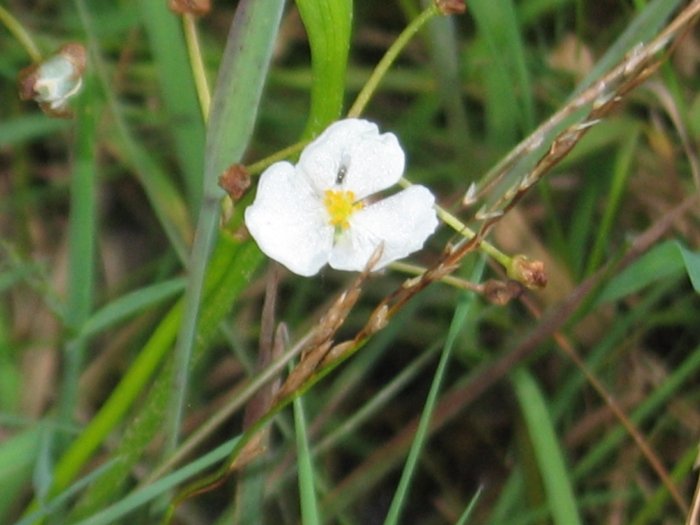Grassy Arrowhead
(Sagittaria graminea)
Grassy Arrowhead (Sagittaria graminea)
/
/

Jomegat
CC BY-SA 3.0




















































Estimated Native Range
Summary
Grassy Arrowhead is valued for its ability to naturalize in wetland gardens and is often used in rain gardens, pond margins, and as a water purification plant due to its filtration capabilities. It is easy to maintain, requiring minimal care once established. In cultivation, it requires full sun to part shade and thrives in aquatic environments or soil that is consistently moist to wet. It is not particular about soil type as long as the soil is saturated. While it is a beneficial native plant in its natural range, Sagittaria graminea can be potentially invasive in regions outside its native habitat. Gardeners should consult local regulations before planting to ensure it is not a threat to local ecosystems.CC BY-SA 4.0
Plant Description
- Plant Type:
- Height: 1.5-2 feet
- Width: 1-1.5 feet
- Growth Rate: Moderate
- Flower Color: White
- Flowering Season: Spring, Fall
- Leaf Retention: Deciduous
Growth Requirements
- Sun: Full Sun
- Water: High, Aquatic
- Drainage: Slow, Standing
Common Uses
Bee Garden, Bird Garden, Butterfly Garden, Edible*Disclaimer: Easyscape's listed plant edibility is for informational use. Always verify the safety and proper identification of any plant before consumption., Low Maintenance, Water Garden
Natural Habitat
Wetland habitats such as marshes, shallow ponds, and wet woods
Other Names
Common Names: Grass-Leaf Arrowhead , Delta Arrowhead , Coastal Arrowhead , Slender Arrowhead , Grass-Leaved Arrowhead , Grasblättriges Pfeilkraut , Sagittaire A Feuilles De Graminees , Sagittaire À Feuilles De Graminées , Sagittaire Graminoïde , Gräspilblad , Erva-Seta
Scientific Names: Sagittaria graminea , Sagittaria graminea var. graminea , Sagittaria cristata , Sagitta graminea , Diphorea graminea , Sagittaria purshii
GBIF Accepted Name: Sagittaria graminea Michx.